Ramen noodles have become a favorite staple for so many people over the years. They are part of a traditional and fragrant Japanese dish made popular across the globe now.
But, what’s the difference between real ramen and instant ramen? Authentic ramen noodles are a whole lot fresher than a pack of instant noodles. Real ramen also has better flavor, texture, and freshness than instant ramen.
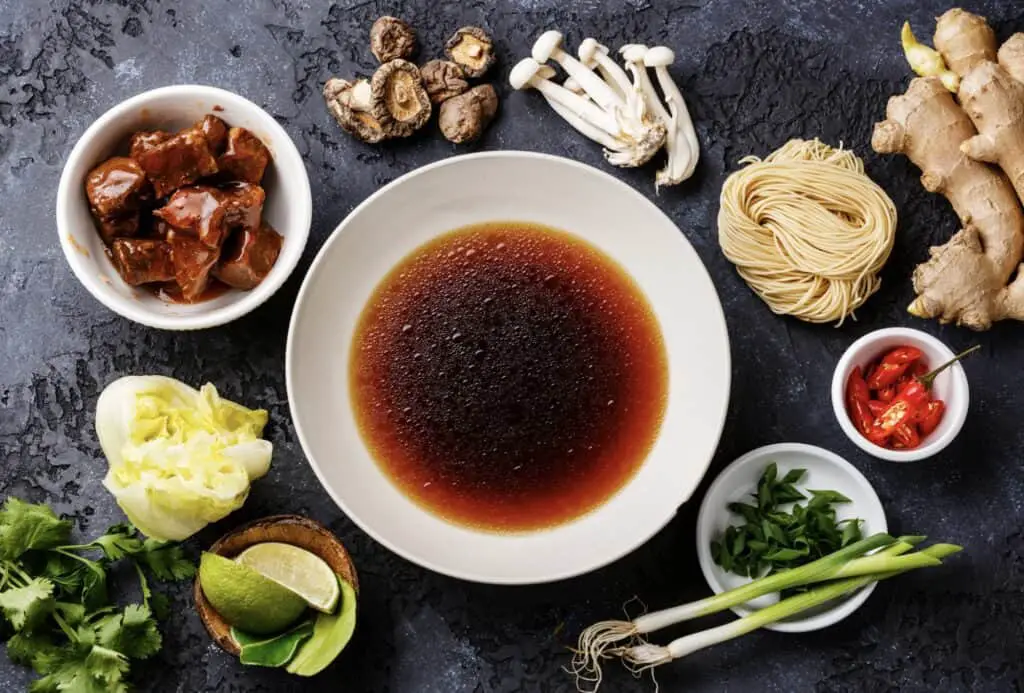

Is there any difference between ramen and noodles? The main difference between ramen and noodles is that ramen is always served in a broth, while noodles can be either dry or in a broth. Ramen is also made with a different type of wheat flour than noodles, which gives it a slightly chewy texture.
Instant noodles have added preservatives too, yet they’re so quick and easy to make and can come in a vast amount of flavors. Each choice has its merits and pitfalls. For example, most instant ramen isn’t exactly keto-friendly.
As a general rule, I think if you’re going to a restaurant, you should expect freshly cooked real ramen noodles in your Japanese noodle soup. But if you’re busy throughout the day and want a quick snack, instant noodles are a tasty go-to treat with tons of flavor that can remind you of ramen.
Plus, freezing your ramen could give you even more of a reason to love it. When noodles are frozen, they become less starchy and take on a chewy texture. The freezing process also helps to meld the flavors together, so when you reheat your ramen, all the deliciousness is concentrated in each bite.
Now let’s check out more about real ramen vs instant ramen…
How Different Is Real Ramen From Instant Ramen?
OK, so let’s get this straight, in actuality, instant noodles aren’t really ramen at all! It’s technically wrong to call instant noodles ramen.
A good comparison to make is with Italian food, and let’s focus on pizza. Now, if you go to Naples, they will happily serve you the original Neapolitan pizza, or as it’s called, pizza Napoletana in Italian.
At some point, other countries, especially America, imported the idea of pizzas but changed how it was made – like the New York or Chicago style pizzas you can get today. In Naples, they wouldn’t accept these variations as pizza – and it’s a similar story with ramen.
You see, ramen is associated with hand-pulled wheat noodles, real umami-rich pork and chicken stocks, chopped up scallions, and barbecued pork, to name a few typical ingredients. What we mean is there is an authentic ramen cuisine, and it differs from region to region right throughout Asia.

Although, of course, Japan is famous for its ramen, and there are four particular types of broth to take note of:
- Shio (salt-based)
- Shoyu (Soy sauce-based)
- Miso (Soybean-based)
- Tonkotsu (Pork broth-based)
Traditional and drawn-out methods are used to make each of these four ramen broths – the backbone of ramen soup. What’s more, these ramen dishes differ in style and preparation from region to region in Japan. So there’s a vast array of original ramen dishes to explore.
With instant “ramen” noodles, you’re simply buying factory-produced noodles and flavors. They come in the forms of cup noodles, instant udon, and soba, for example. The name soba is actually used because it is thought the origins of noodles come from China – hence the original name, shina soba (Chinese soba).
Check out this post if you’re wondering whether ramen noodles are rice noodles.
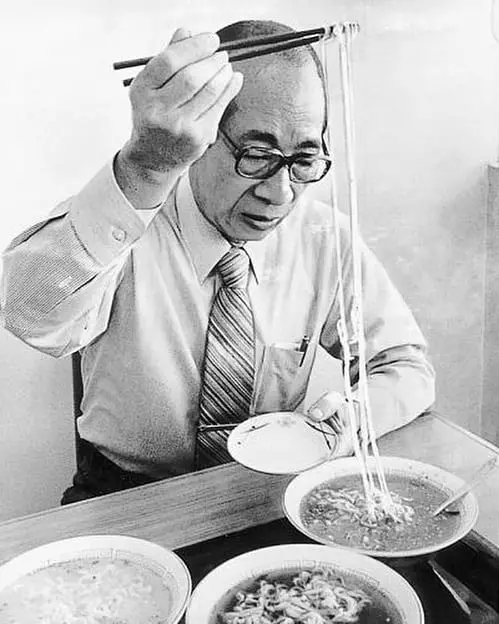
Momofuku Ando was the guy who created instant noodles and released them onto the market in 1958. At that time, instant noodles were a premium option due to the rapid time it takes to cook them, along with an extra-long shelf life.
Only later on, when factories ramped up instant noodles’ production, the prices could drop massively – since they are so incredibly cheap to make on a large scale.
The Only Real Similarity
The only aspect of real ramen and instant ramen that we can think of is that instant noodles can be soup-based and can use kansui as an ingredient (we’ll explain about this ingredient soon).
Remember, there are so many varieties of noodles out there, it’s essential to recognize that ramen noodles are served in a soup to make a ramen dish. If you were to stir fry the same noodles, then you wouldn’t be getting a complete and traditional ramen dish.
How Is Real Ramen Made?
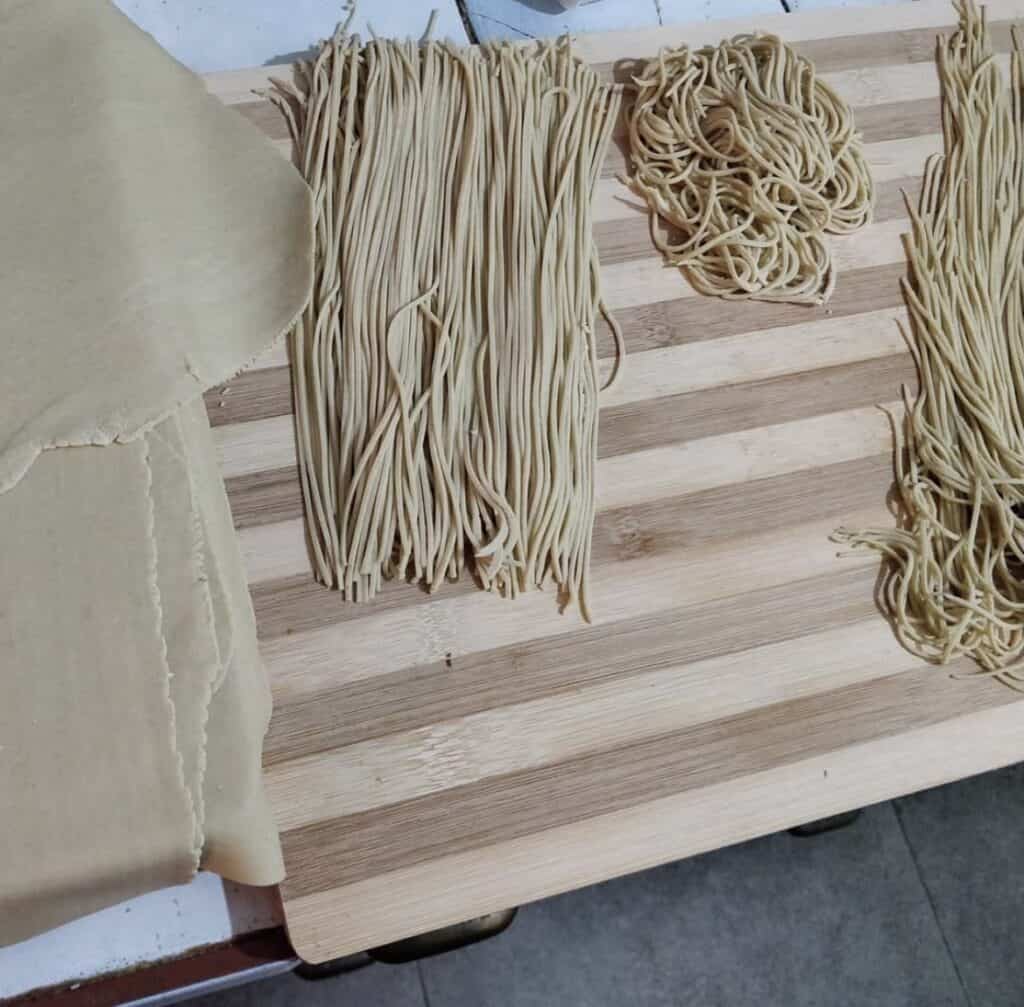
Wheat flour, salt, kansui, and water are used to make ramen noodles usually.
People also wonder, are ramen noodles fried? Ramen noodles are typically not fried. Traditionally, ramen is boiled in water and then served with toppings. However some restaurants offer options of frying the noodles by briefly dipping them into boiling oil before serving them.
Fresh ramen can also be eaten on its own without soup or toppings.
Kansui is an alkaline water that contains sodium and potassium carbonates, plus a touch of phosphoric acid sometimes. What ultimately separates ramen noodles from others, such as udon or soba, is the addition of kansui – which is what gives ramen its very distinct yellow coloring.
Furthermore, kansui gives the noodles a firmer texture and more elasticity than other varieties. Plus, the addition of this ingredient means ramen noodles don’t absorb liquids so easily. This is why they work so well in broths – many other noodle types tend to break apart and become messy.
There are some ramen noodle recipes out there that utilize eggs instead of kansui. This is because eggs can also color the noodles into their signature yellow, and they make the noodles less absorbent too.
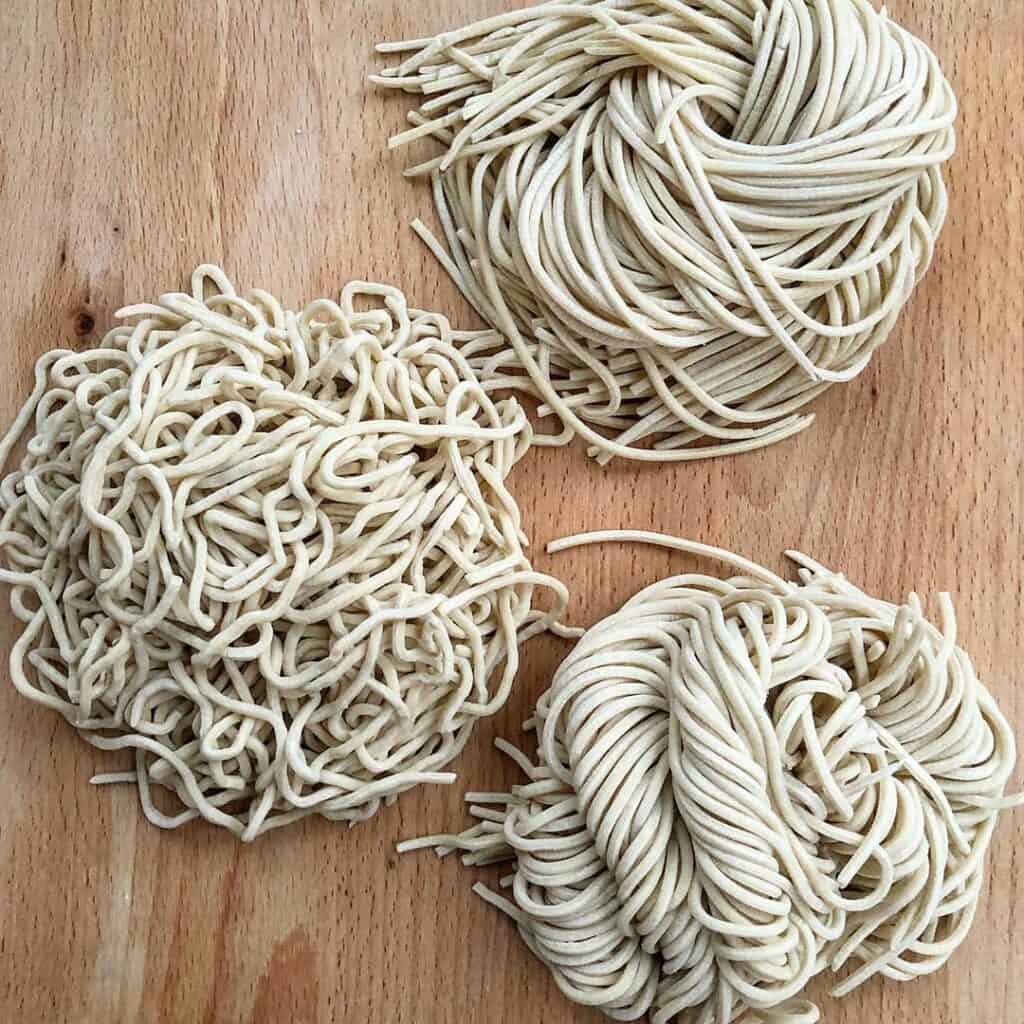
It should be noted that ramen noodles are available in many different thicknesses, lengths, and types. The very thin, straight, and short noodles popular in Hakata-style tonkatsu shops are very different to the very long, dense, and super curly noodles found in Kitakata – a city of ramen.
So, to make the ramen, all the ingredients are kneaded together to make the dough. Then for best results, the dough is hand-pulled. The reason why traditional Japanese chefs hand-pull noodles is because it is thought they will retain more water content than if the dough were rolled out and cut. Although, many chefs like to hand-cut their Ramen noodles as well for a more rustic vibe.
How Is Instant Ramen Made?
Making instant ramen starts by kneading the wheat flour and other ingredients together to create a dough. Then machines roll out the dough and cut it into noodles. Since instant noodles need to be dehydrated, there’s no sense in pulling the dough to retain any water as it will be taken out eventually anyhow.
Once the noodles are cut, they are then moved on to be steamed and then dehydrated, ready for packaging. And there are many fine-tuned dehydration approaches used to make instant ramen, as it’s such a vital part of the process to preserve the noodles.
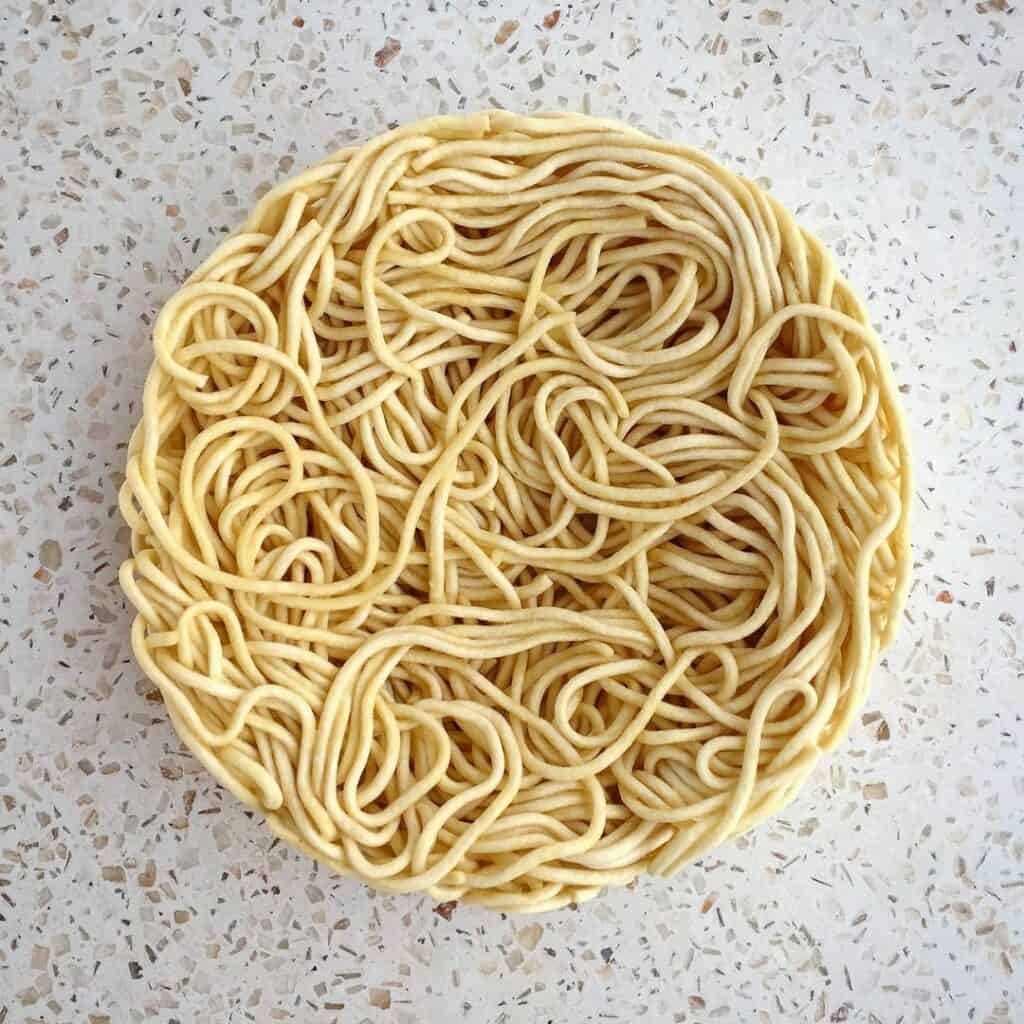
The inventor of instant noodles, Momofuku Ando, found that quickly deep frying noodles would almost entirely dehydrate them. The idea came to him from the Japanese deep-fried food called Tempura. Also, the hot oil used to dehydrate the noodles leaves tiny holes on the noodles, making it easy for them to rehydrate when they come in contact with hot water.
Nowadays, new methods have been developed, such as blow-drying the noodles at high temperatures to remove all their moisture.
But to implement this method successfully, the noodle ingredients need to be changed and exact timing and temperatures are required. Otherwise, the blow-dried noodles become too rubbery and don’t separate well in the broth either.
Both fried noodles and blow-dried instant noodles still exist today. Because the fried versions have the tiny holes, they cook quicker in hot water, while blow-dried options will take an extra few minutes to take their proper form.
We must say that, although instant ramen is not the same as real ramen, it can still be enjoyable to eat as part of a ramen-style dish.
Ramen Toppings
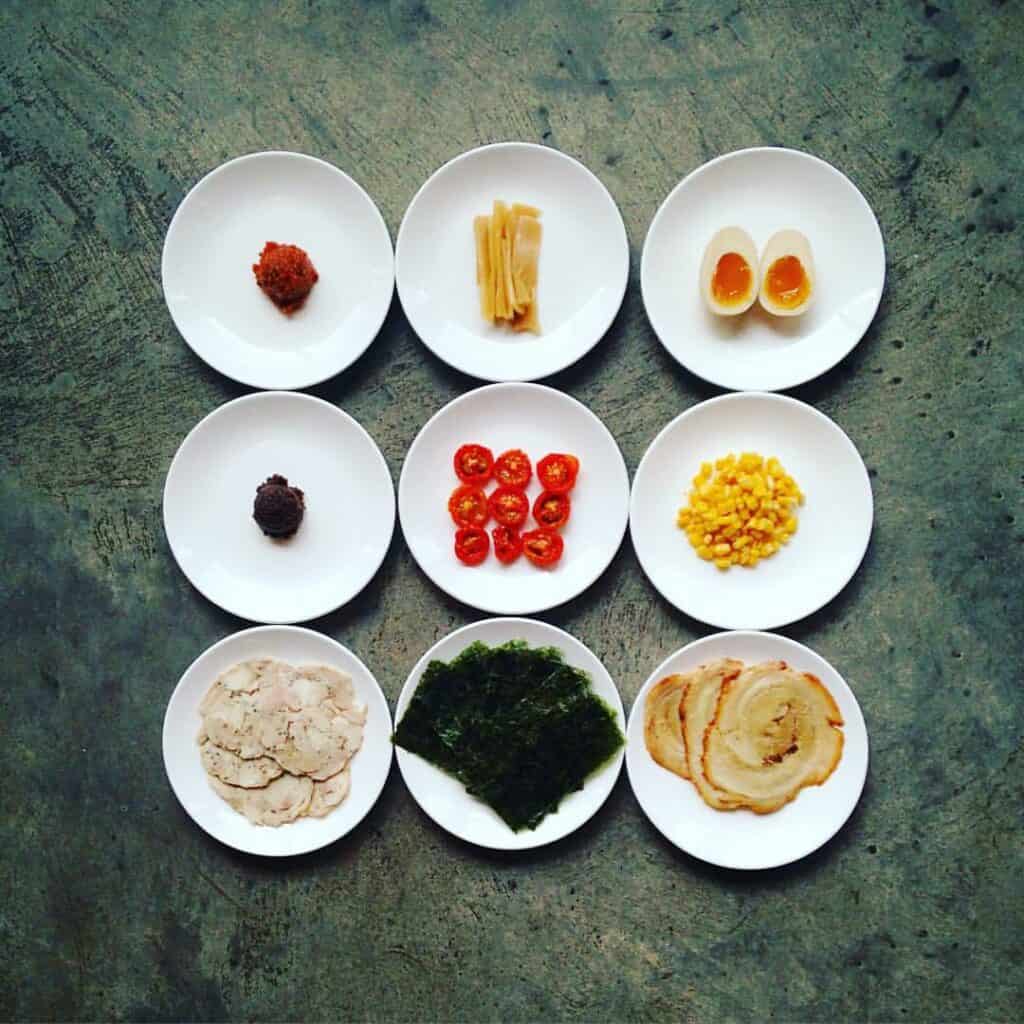
Once you’ve got your noodles ready and one of the four traditional broths that we stated previously, you can start to consider ramen toppings.
We’ll focus only on the traditional toppings served in Japan, but we are fully aware that there are all sorts of new and fusion-style ramen recipes to be found.
Nori seaweed is an ingredient that adds lovely color contrast to a bowl of ramen. It comes in sheet form when added to ramen and exhibits a seawater-like flavor. These sheets are usually brisked with oil, and then equal amounts of sugar and salt are added.
Spring onions are simply chopped up and sprinkled over broth and other ingredients as a final touch. Also known as scallions, these vegetables add an extra level of depth and flavor to ramen dishes, especially because they are not cooked.
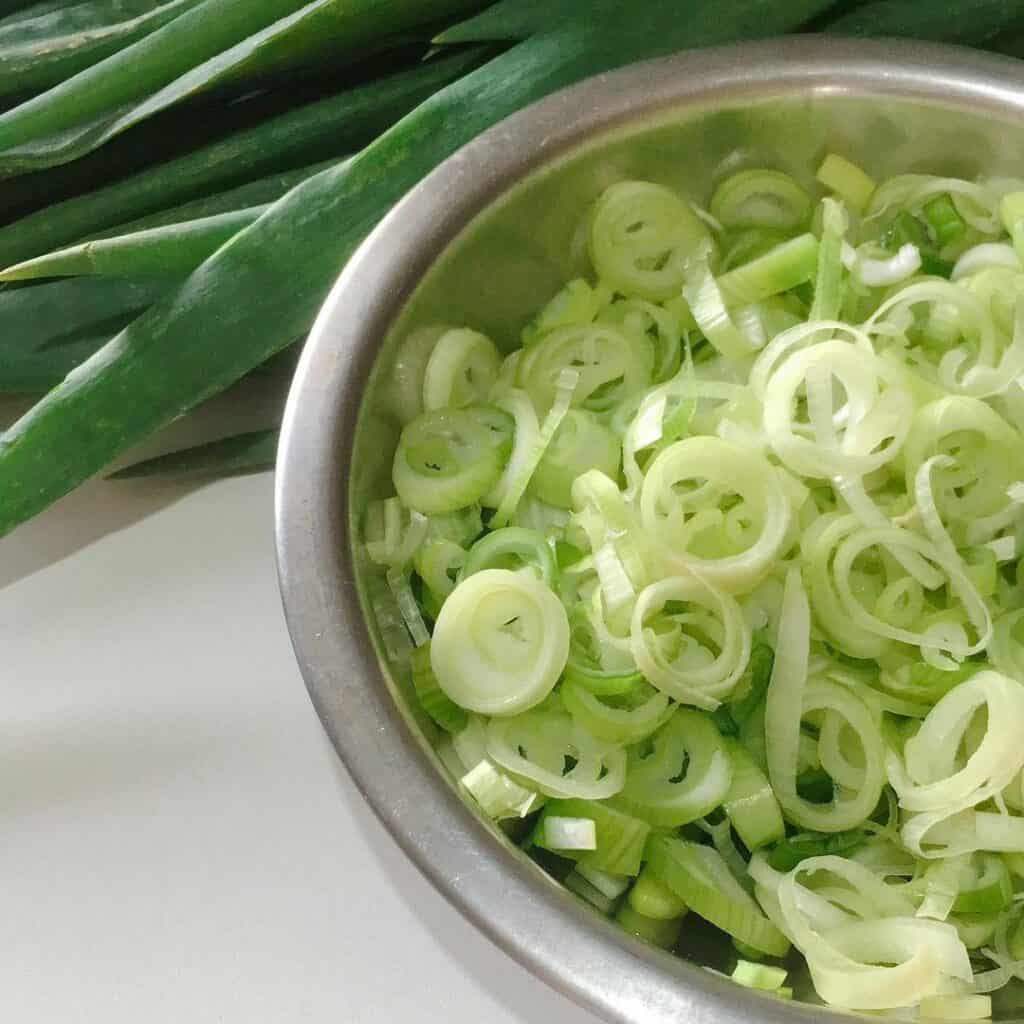
Boiled eggs are prevalent in several ramen dishes. They are cut in half and then just dunked into the soup. Sometimes you are given the option at a restaurant to choose how long you want your egg to be cooked – typically soft boiled or hard-boiled.
Menma are dried bamboo shoots that are sun-dried and then undergo a fermentation process before they are served up with your ramen. Furthermore, before it’s ready for your ramen, menma gets seasoned with a variety of sweet and sour seasonings such as sugar, sesame oil, and soy sauce.
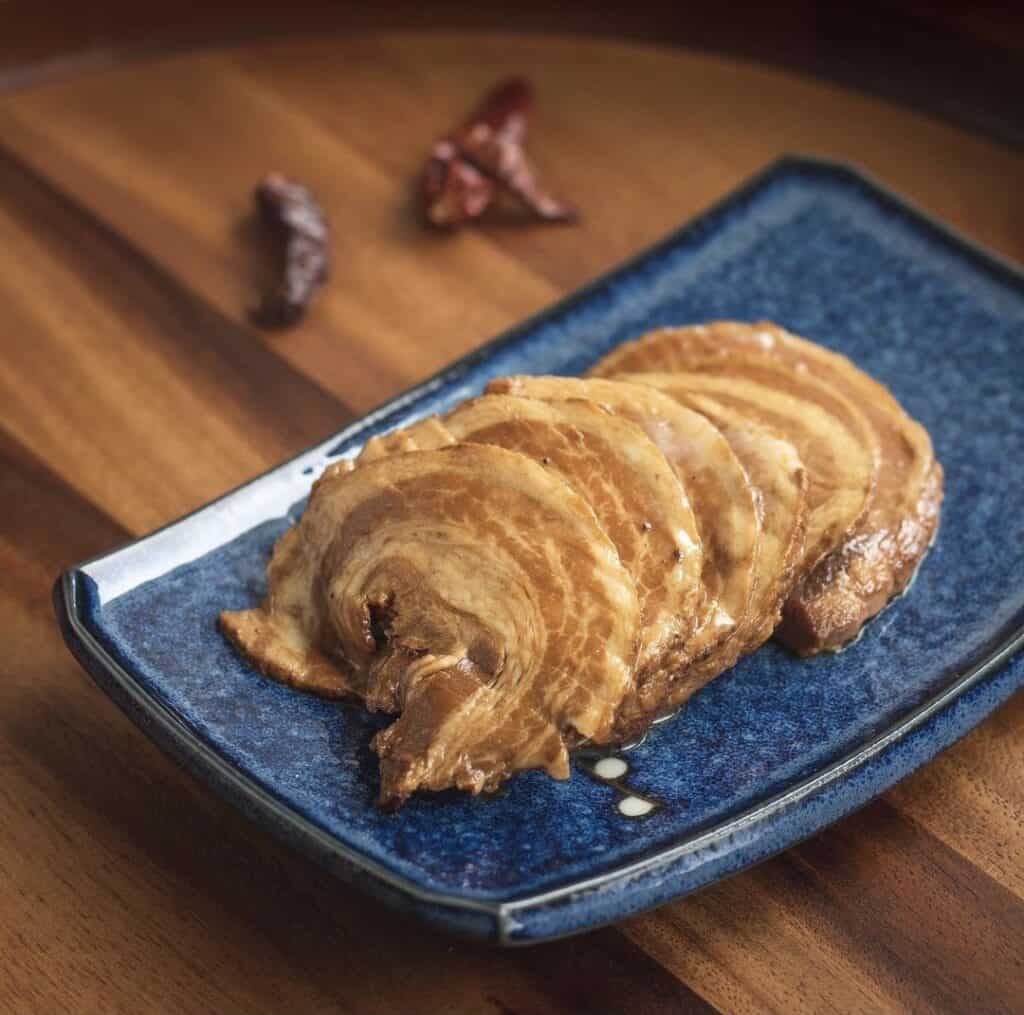
Chashu pork is made up of a mixture of pork belly and pork loin. This pork combo is cooked in soy sauce and saki until it becomes super tender and delicious. There are various other pork toppings, but chashu is one of the most popular choices that comes in thin slithers, by far.
Traditional ramen fish cakes are always included in a true ramen dish. They are known in Japanese as either Kamaboko or Narutomaki/ fish cakes, and they add a touch of eccentricity and brightness to the bowl and a subtle umami flavor.
Homemade Ramen Noodle Recipe
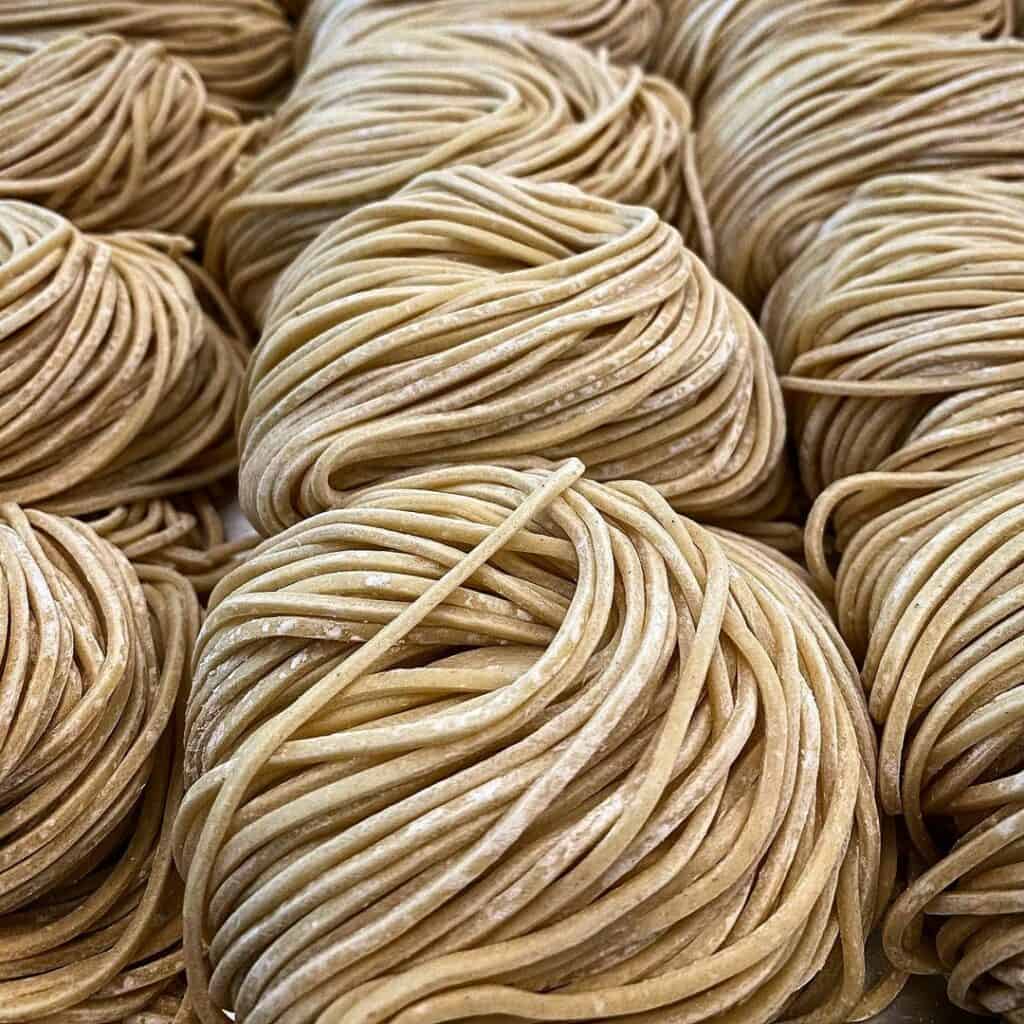
By now, your mouth must be watering for some silky smooth ramen and wholesome broth with all the toppings?
Here is a simple recipe you can try at home to make your own authentic ramen noodles, influenced by traditional methods. And, they’ll be much more juicer and more savory tasting than any of the cheap instant packaged varieties you can buy.
To make things easier for you, we’ve added baking soda and alcohol into the recipe as proven hacks to make your ramen taste authentic. The reason for this is that kansui is very difficult to get hold of in the west. However, if you do have kansui, by all means, use it!
Ingredients
100 grams of Wheat Flour/Ramen Flour
28 grams of water
1-2 grams of baking soda
3.5 milliliters of alcohol
Step 1
In a small container, combine your water, alcohol, and baking soda. Next, sift your flour into a large bowl and then pour your mixture slowly into the flour and mix with chopsticks.
You should mix until all of the liquid is fully absorbed into the flower and see a watery breadcrumb-like consistency.
Step 2
Now shape the mixture into a ball, and then layer cling film over the bowl’s top to seal in the ball. Wait for 15-20 minutes so that the dough can develop properly.
Step 3
Now you need to knead the down by folding it in half two times and then pressing it flat. Repeat this a few times to create more elasticity in your ramen noodles.
Step 4
Place the dough on a flour-dusted surface and use a rolling pin to make it flat and square-shaped. The dough’s ideal thickness is about 2 millimeters, though some may prefer their noodles a little thicker.
Step 5
Fold over the dough three times but make sure to dust flour on the dough between the folds to prevent sticking. Then you can start cutting your noodles out with approximately 2 millimeters spacing for each cut.
Now you’re ready to cook your noodles! Just get rid of any excess flour and then drop them in boiling water. If you cut your noodles super-thin, they’ll only need around 1 minute to cook. For more significant noodle cuts, try between 2-3 minutes to allow your noodles to cook correctly.
Conclusion
Real ramen clearly has a substantial edge over instant ramen in terms of flavor, texture, and freshness. Instant ramen noodles are great for absorbing broths and flavors, but they’ll be lacking in their own individual flavors because of their processing and dehydration.
That being said, instant ramen can be a quick way to get your ramen fix when you haven’t got the time to either make your own authentic ramen, head down to a restaurant or order it online. You could also try to find similar toppings to the authentic versions and make an instant ramen bowl of your own with little effort.
So finally, thanks for checking out this article. I hope you now understand a little more about the differences between real ramen and instant ramen. And I think ultimately, nothing beats the real deal if you can get it!
